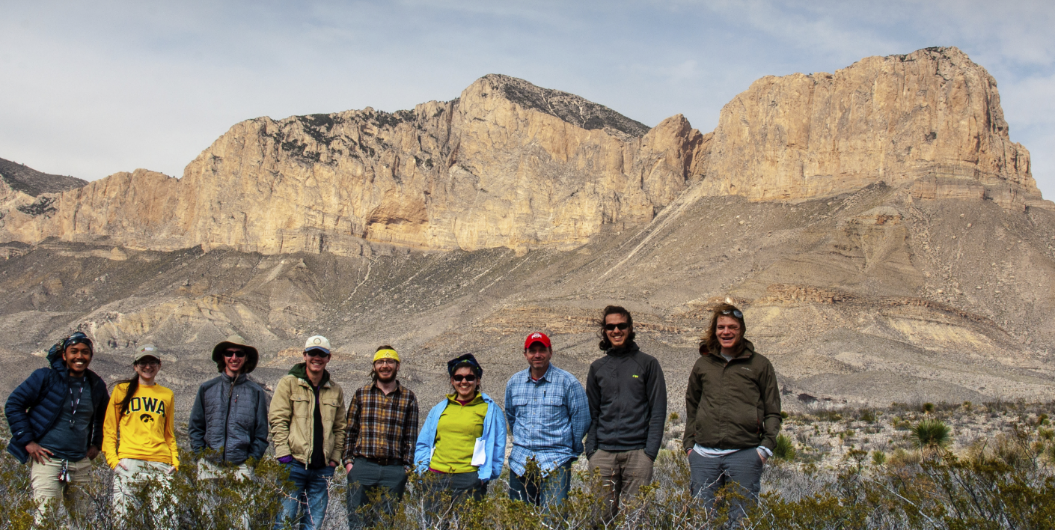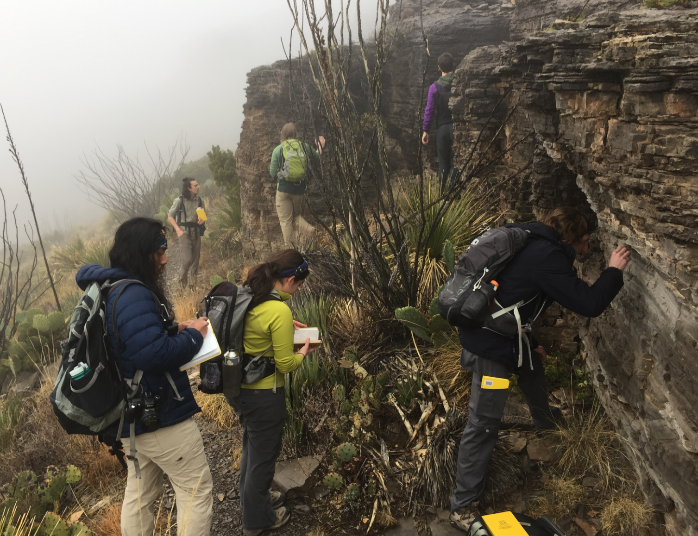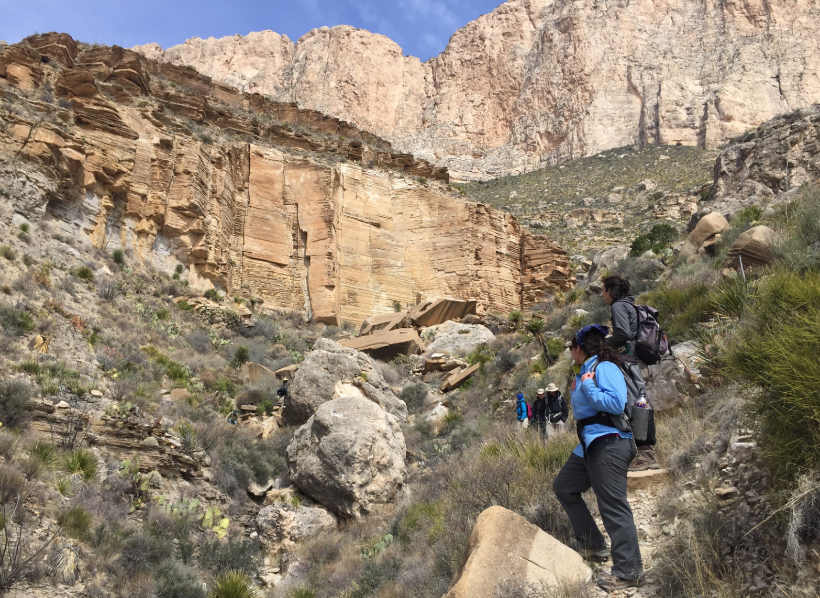CERTAIN Faculty Fellow led spring break class trip to the Guadalupe Mountains
Dr. Derek Sawyer led a field trip of SES students to the Guadalupe Mountains of west Texas and southern New Mexico during Spring Break March 11-16, 2019. The 6-day trip featured visits to classic locations of the Permian Reef Trail, Last Chance, Bone, Shumard, Slaughter, and Walnut Canyons, plus the Carlsbad Caverns and roadside stops at the Castille Evaporites and the Rader Slide.
 Class participants in front of El Capitan, western escarpment. From left: Datu Adiatma, Erika Danielsen, Jonathan Bell, Ryan Heber, Chris Waid, Teresa Avila, Dr. Derek Sawyer, Christopher Conwell, and Brent Lary. Photo: Datu Adiatma.
Class participants in front of El Capitan, western escarpment. From left: Datu Adiatma, Erika Danielsen, Jonathan Bell, Ryan Heber, Chris Waid, Teresa Avila, Dr. Derek Sawyer, Christopher Conwell, and Brent Lary. Photo: Datu Adiatma.
The Guadalupe Mountains provide outstanding continuous exposures of a wide spectrum of carbonate and siliciclastic environments across a shelf-to-basin transect. Prior to the trip, students paired up to research an outcrop locality of their choosing. In the field, day trips were led by each team and as a group worked together to interpret depositional environments and synthesize observations to infer paleogeographic evolution. The goals of the course were to increase educational field-course opportunities for students and to provide direct experience in mixed carbonate-siliciclastic systems.

Students examining carbonate slope and basin deposits along the Permian reef trail, McKittrick Canyon. Photo: Derek Sawyer
Class participants included: SES graduate students Christopher Conwell, Teresa Avila, Ryan Heber, Brent Lary, Datu Adiatma, and Brandi Lenz; SES undergraduate Jonathan Bell; and Ohio Department of Natural Resources geologists Erika Danielsen and Chris Waid.
“This trip provided an excellent opportunity to see both the stratal geometry and lithological patterns of depositional sequences in one region (and even at single outcrops!), helping expand my understanding of sequence stratigraphy in mixed clastic-carbonate environments.”
“The Guadalupe Mts region is a textbook case study of sequence stratigraphy. In locations like Last Chance Canyon, we were able to walk along exposed facies and study the sequence stratigraphy in person, which really helped to illuminate concepts that were harder to grasp in theory.”
“The best part of this trip is simply being able to put my finger on Sequence Boundaries (SBs). It is just spectacular!”
“My favorite part of the trip was in Bone Canyon, where we saw amazing angular unconformities, channel scours, breccias, and deformed sandstones in close proximity.”
“As a professional geologist, continuing to take field courses like this is invaluable to me. The mixed carbonate-siliciclastic deposits exposed in the Guadalupe Mountains provided excellent analogues to rocks that are not as well exposed here in the Midwest. It's great to bring new knowledge back with me and apply the concepts I studied on this trip to my research in Ohio.”

A large seismic-scale sandy turbidite channel outcropping in Shumard Canyon with El Capitan and the western escarpment in the background. Photo: D. Sawyer
The field trip expenses were fully supported by a CERTAIN Faculty Fellows award to Dr. Sawyer.